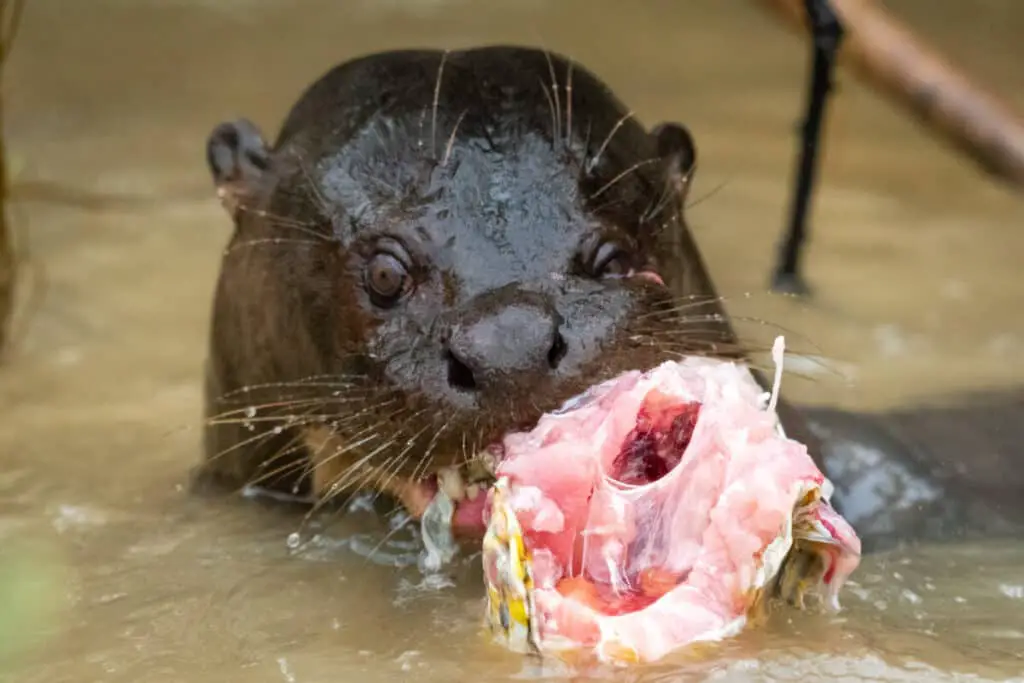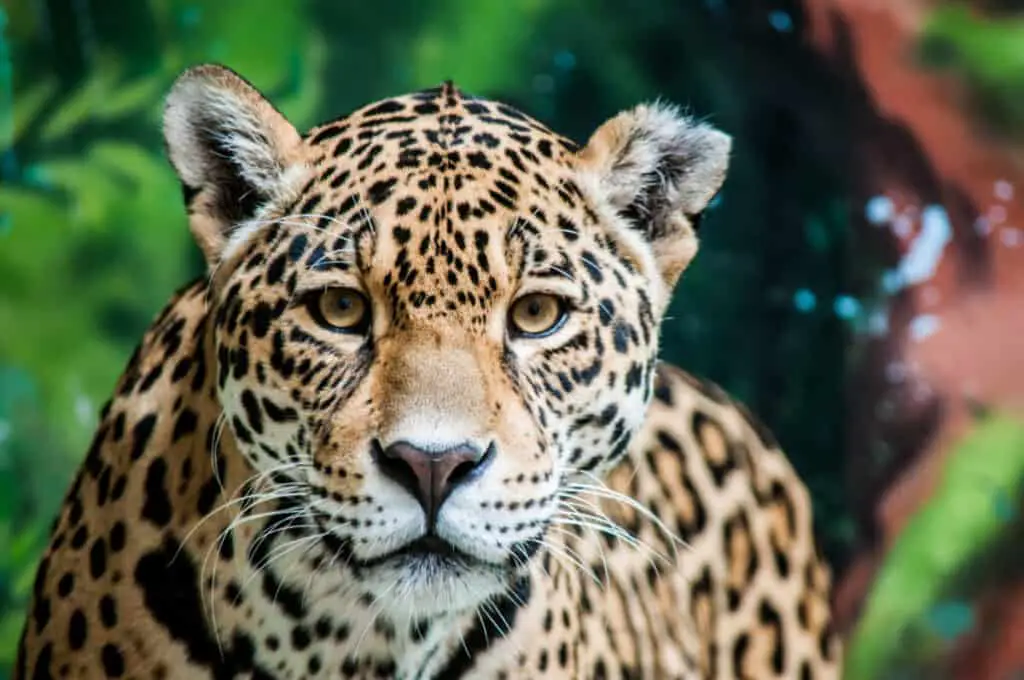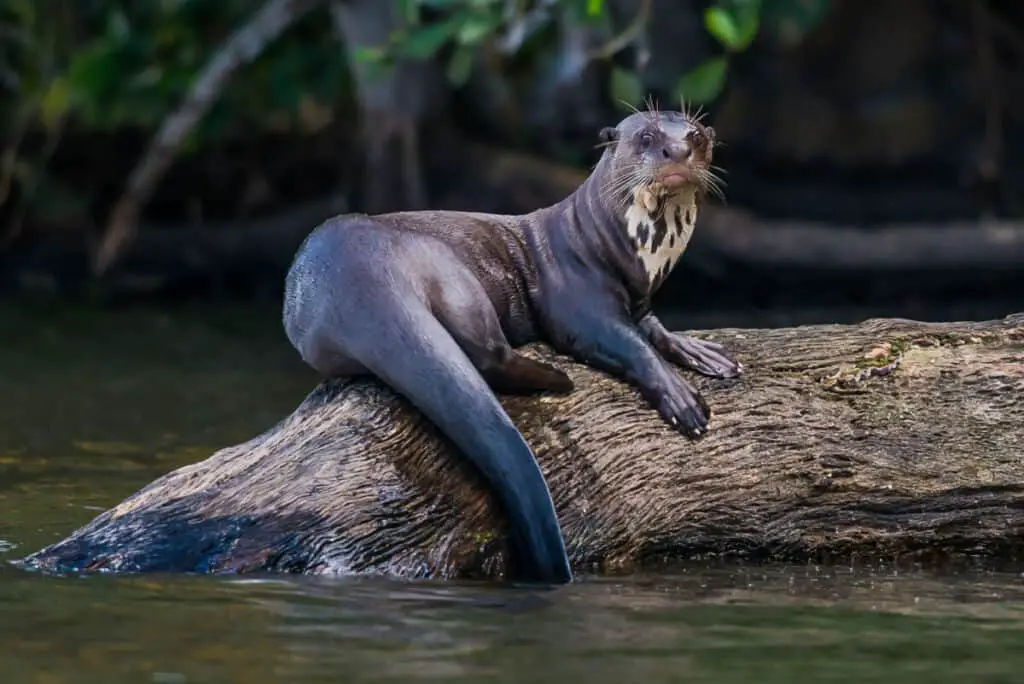Giant river otters are one of the largest and most social members of the mustelid family, found in South America’s freshwater habitats. These apex predators have few natural enemies due to their size, strength, and agility; however, predation is still a significant threat to them.
The study of predator-prey relationships is vital for understanding ecosystem dynamics and conservation efforts. Therefore, it is essential to investigate what animals pose threats to giant river otters and how these interactions affect ecosystems’ balance.
In this article, we will explore the various predators that threaten giant river otters and examine why they target this species.

The Importance Of Understanding Predator-Prey Dynamics
The study of predator-prey dynamics is crucial for understanding the functioning of ecological systems. Predator-prey interactions play a vital role in regulating populations and maintaining balance within food chains. Understanding these relationships can help us predict how changes to one species’ population may affect others that rely on it.
One example of this is the giant river otter, which occupies an important position in the food chain as both predator and prey. These otters are apex predators in their aquatic habitats, feeding primarily on fish but also preying on other animals such as snakes and caimans. They are also vulnerable to predation themselves by larger carnivorous mammals like jaguars and anacondas.
By studying how these interactions play out, we can gain insight into the broader workings of ecosystems and better appreciate the interconnectedness of all living things. Additionally, understanding the impact of habitat destruction on predator-prey dynamics is critical for conservation efforts aimed at preserving vulnerable species like the giant river otter.
The Habitat Of Giant River Otters
Understanding predator-prey dynamics is crucial to the survival of many species, including giant river otters. These animals face a number of threats in their habitat, which include predation by other animals such as jaguars and anacondas.
Other predators may also pose a threat to young or weak individuals who are more vulnerable to attack.
In order to survive in this challenging environment, giant river otters have developed a range of adaptations. These include excellent eyesight both above and below water, acute hearing that can detect prey from great distances, and powerful jaws for catching fish and other aquatic prey.
They are also highly social creatures with complex communication systems that allow them to work together when hunting or defending themselves against predators.
Despite these adaptations, however, the impact of human activities on their habitat remains one of the greatest threats to their survival.
The Physical Characteristics Of Giant River Otters
The giant river otter is an intriguing species that inhabits the freshwater rivers, streams, and lakes of South America. These fascinating creatures are known for their unique physical characteristics which enable them to swim with agility and speed underwater. Their long and powerful tail acts as a rudder while their webbed feet allow them to move swiftly through water. Furthermore, they have sharp claws and teeth which aid in hunting prey.
Apart from the physical attributes that make these otters stand out, there are also behavioral traits that set them apart from other animals. Giant river otters are highly social creatures who live in family groups consisting of up to 12 individuals. They communicate using various sounds such as whistles, grunts, and screams.
Additionally, they exhibit playful behavior among themselves like sliding down muddy banks or playing with objects found near the water’s edge. As far as hunting techniques go, giant river otters use a combination of strategies when targeting prey such as fish, snakes, crustaceans, and even small caimans. They work together to herd schools of fish into shallow waters where it becomes easier to catch them; alternatively, they may dive deep into the water column to capture individual prey items using their keen sense of sight and smell.
Overall, studying the physical characteristics and behavioral traits of giant river otters sheds light on how this magnificent species has adapted over time to survive in its aquatic environment without succumbing to predators such as anacondas or jaguars that share their habitat.

Natural Predators Of Giant River Otters
Despite being at the top of their food chain, giant river otters still have natural predators that pose a threat to their survival. However, these are rare.
Interactions with competitors such as jaguars and anacondas are known to be the main cause of mortality among adult giant river otters in some areas. These predators use stealth hunting strategies, waiting for an opportunity to strike when the otter is vulnerable while swimming or resting along the river bank.
Jaguars, also known as apex predators, can take down prey larger than themselves using powerful jaws and sharp claws. They hunt during both day and night time periods, making it difficult for giant river otters to predict their movements.
Anaconda snakes, on the other hand, typically ambush their prey by coiling around them tightly until they suffocate. Although anacondas primarily feed on fish and rodents, they have been observed attacking and consuming young giant river otters.
The presence of these formidable predators highlights the need for conservation efforts to safeguard this species from further population decline.
Human Threats To Giant River Otters
The beauty and unique traits of giant river otters make them a prime target for human threats. Human-wildlife conflict is the most significant threat to these creatures, with people encroaching on their habitats and causing disturbances that disrupt their natural way of life.
Additionally, poaching activities aimed at profiting from their fur have led to a decline in their population. Poachers target giant river otters for their luxurious pelts, which are highly sought after by the fashion industry. This demand has fueled illegal hunting practices across South America, where these animals reside.
Furthermore, habitat loss due to deforestation and hydroelectric projects poses another challenge for conservation efforts aimed at protecting this species. These factors combined threaten the survival of the giant river otter population in the wild.
- Human-wildlife conflict is one of the primary reasons why giant river otters face extinction.
- Poaching activities remain rampant in many parts of South America despite being an illegal practice.
- The fashion industry’s demand for otter fur contributes significantly to poaching cases.
- Habitat loss caused by deforestation and construction projects further threatens the survival of this species.
- Conservation efforts must focus on addressing both direct and indirect threats facing giant river otters.
In conclusion, it is evident that human-related threats pose significant challenges to conserving giant river otter populations in their natural habitats. As such, there is a need for collaborative conservation programs targeting communities living near rivers where they reside to create awareness about sustainable wildlife management practices while also preserving these environments’ ecological integrity.
The Ecological Importance Of Giant River Otters
Human threats to giant river otters have been extensively studied due to their negative impact on the population. However, it is important not to overlook the ecological benefits that these animals provide in their natural habitat. Giant river otters play a crucial role in maintaining a healthy and balanced river ecosystem.
One of the most significant ecological benefits provided by giant river otters is their impact on fish populations. These carnivorous mammals feed primarily on fish, which helps keep certain species from becoming overpopulated and consuming too much plant life in the river. In turn, this maintains a balance between herbivorous and carnivorous fish species, as well as other aquatic organisms dependent upon them for food. Additionally, when giant river otters hunt and consume large predatory fish, they help prevent those predators from preying upon smaller fish species lower down on the food chain. This also helps maintain a diverse and thriving river ecosystem.
| Ecological Benefits | Emotion Evoked | Evidence |
|---|---|---|
| Maintaining balanced fish populations | Appreciation for nature’s delicate balance | Studies show that giant river otter diet consists mainly of small- to medium-sized fish (Cantanhêde et al., 2019) |
| Promoting diversity within ecosystems | Awe at the complexity of nature | Research suggests that giant river otters are able to coexist with many different species within their habitat (Rosas-Ribeiro et al., 2020) |
Overall, the presence of giant river otters has far-reaching positive effects throughout their native habitats. From regulating fish populations to promoting biodiversity, these creatures contribute significantly to the health and wellbeing of tropical rivers and surrounding ecosystems. It is essential that we continue to study and protect these animals so that future generations can enjoy all that they offer both ecologically and aesthetically.
Conservation Efforts To Protect Giant River Otters
Collaborative research efforts have been critical in the conservation of giant river otters.
Scientists from various countries have come together to study these animals and their habitats, identifying key threats and developing strategies for protection.
Through this collaboration, researchers have determined that habitat loss due to deforestation, pollution from mining and agriculture, overfishing, and hunting are some of the primary risks facing giant river otters.
Community involvement is also essential for the preservation of giant river otters.
Local communities living near these rivers need to be part of conservation efforts as they hold valuable knowledge about the animals’ behavior and habits.
Furthermore, empowering these communities with education on sustainable fishing practices can help reduce pressure on fish populations while ensuring a steady food source for the otters.
Collaborating with local organizations and governments can also create opportunities for ecotourism activities which can provide alternative livelihoods without harming the environment or its inhabitants.
Overall, it is through collaborative research and community involvement that we can protect these magnificent creatures for future generations to enjoy.

Conclusion
Understanding predator-prey dynamics is crucial for the conservation of any species.
The giant river otter, a top carnivore in its habitat, faces various natural predators such as jaguars and anacondas.
However, human threats like hunting and habitat destruction pose greater risks to their survival.
Despite being an apex predator, giant river otters play an essential role in maintaining the health of their ecosystem by controlling prey populations.
Conservation efforts must prioritize protecting these valuable animals through measures such as creating protected areas, reducing pollution levels, and educating local communities about sustainable practices.
By safeguarding the future of giant river otters, we also protect the biodiversity of their ecosystems for generations to come.
